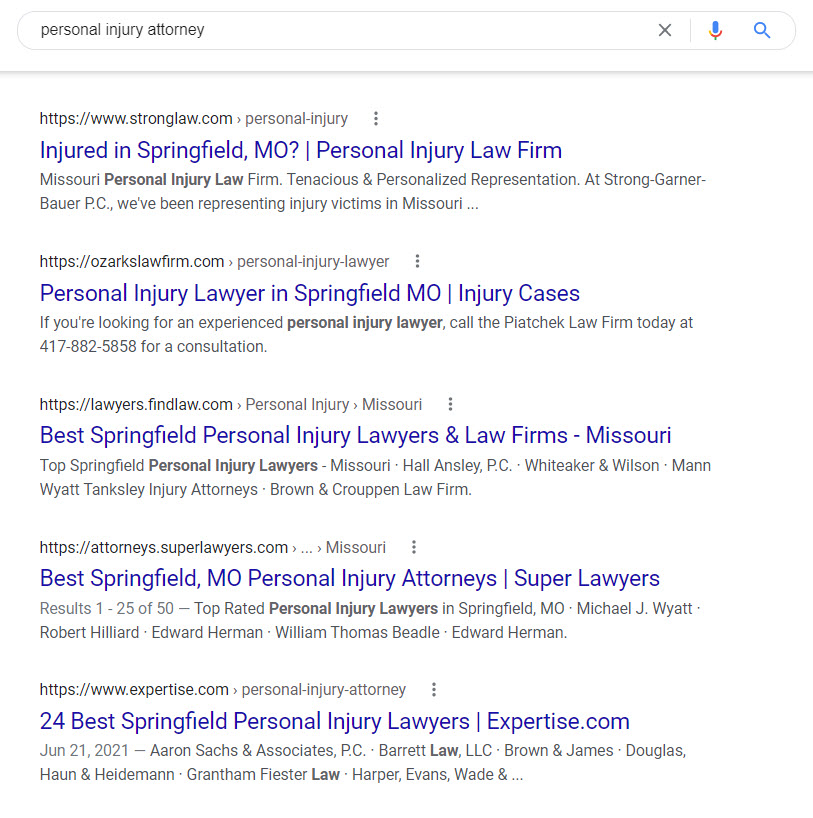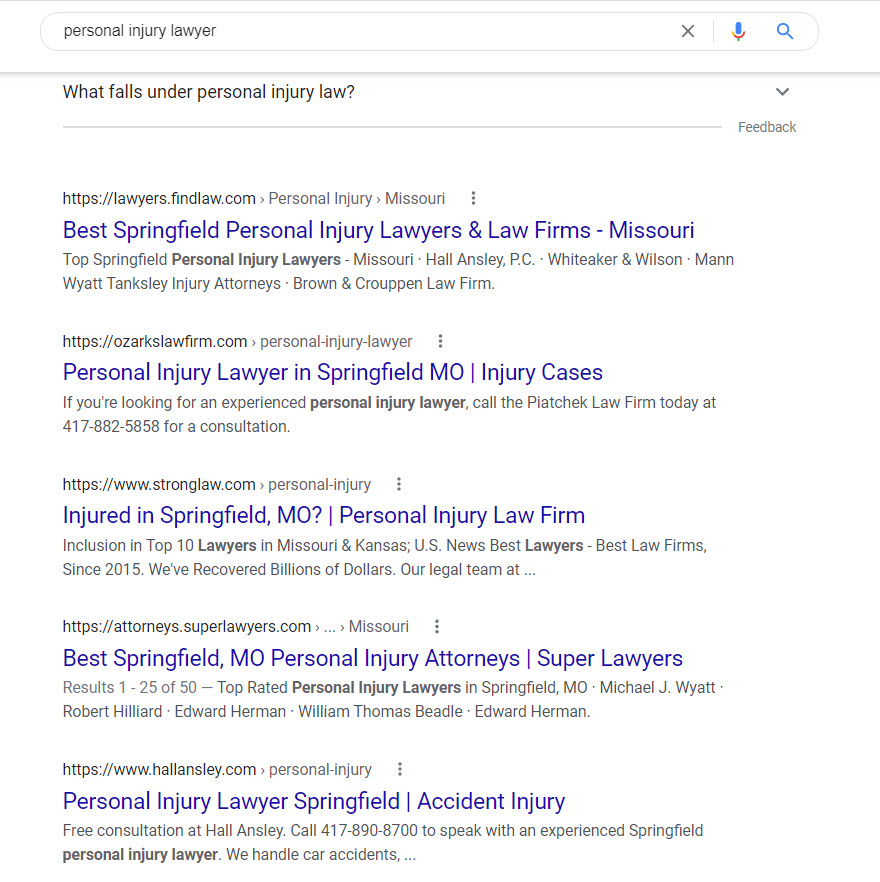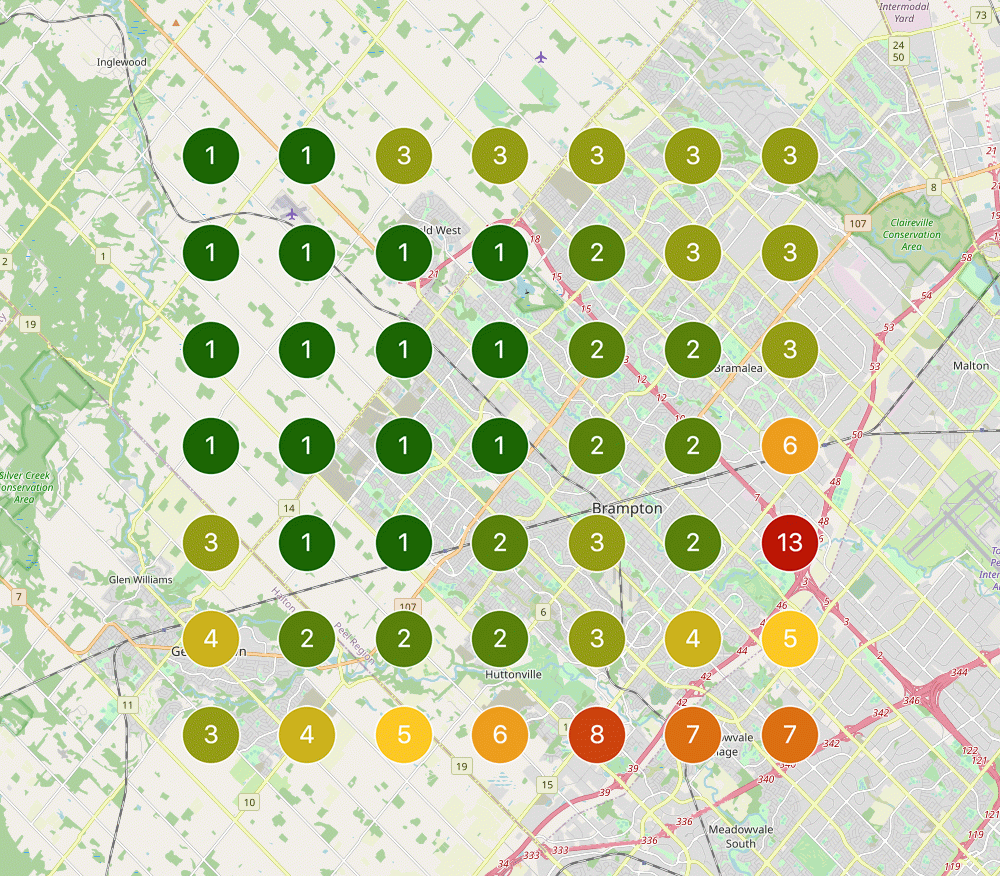In the first three parts of this series about how to do local SEO, we’ve scaled the local search microcosm, explored user intent, and gathered relevant data. By working through each of these steps, we’ve constructed a powerful, data-backed local SEO strategy. So, what’s missing?
*summons wise mentor voice*
“The answer has been inside you all along, my fellow marketer.”
*cue John Williams orchestra to emphasize the magnitude of self-discovery*
OK, OK, but seriously, you need to look at the state of your own website to make some final decisions about your local SEO strategy. By “the answer has been inside you all along,” I’m talking about an understanding of what makes your content, products, and services unique.
Read Your Website Content
You’re reading this blog post, which already means you’re one step ahead of other marketers. Because you’re reading the content! Yay you! It never fails to surprise me that marketers will forge ahead with an entire keyword strategy, but not take the time to understand the content backing those keywords.
Here’s an example of two very different snippets of content about the same core keyword. Both of these lawyers want to rank for the keyword “car accident attorney” but have organized their content differently.
Content Piece #1
At Gnarls Barkley & Co, we’re committed to helping people get back on their feet after an injury. The experienced team at our Springfield, MO, personal injury law firm helps people who have experienced devastating car, truck, and bike accidents. When tough medical, legal, and insurance challenges arise, our team is here to hold all parties accountable.
Content Piece #2
A car accident can result in disastrous consequences for a person’s overall health and finances. If you or a loved one has been seriously injured in a car accident, the attorneys at KK Slider Group in Springfield, MO, can help. We work with anyone who has been impacted in a personal injury case, including passengers, drivers, and pedestrians.
Both pieces mention car accidents, our target keyword. However, Content Piece #2 references more details about an actual car accident. After reading the content, I would say that Content Piece #1 is focused more on “personal injury lawyer,” and Content Piece #2 is more focused on “car accident lawyer.”
Typically, we see these differences in content when a client’s website doesn’t have specific service pages. Comparing local SEO requirements for the two law firms, we gain an understanding of what’s missing for Gnarls Barkley & Co.:
| Gnarls Barkley & Co. | KK Slider Group | |
|---|---|---|
| GMB is located in Springfield, MO | X | X |
| Site received traffic in Springfield, MO | X | X |
| Users convert for the term "car accident attorney" | X | X |
| Content focused on "car accident attorney" | X |
So—if a client has requested rankings for “car accident attorney,” and this keyword is in demand, then the highest priority is better content. Technically, we could try to emphasize “car accident attorney” in Content Piece #1, but we should avoid squeezing in keywords where the content will read awkwardly.
When reading the content of a website, look at its overall purpose. If that purpose is different from the keywords that should be marketed, recommend more relevant content. Don’t try to “make it work” with the requested keywords and compromise the quality of the existing content.
Making Final Decisions
Choosing the right keywords for a page is tricky. In the previous example, I looked at the content used by a competitor and compared it with another website’s content. This same practice can be used when trying to make a decision around two similar keywords.
When two keywords are similar, and you’re trying to choose the right one, you can search for both terms and compare the SERP between the phrases.
Keyword #1: personal injury attorney, SV 50
Keyword #2: personal injury lawyer, SV 50
Google’s Keyword Planner lumps these terms into the same search volume.
Technically, Google’s database sees “lawyer” and “attorney” as semantically similar. They are considered to be the same term. But in highly competitive environments, the SERP for extremely similar keywords can be very different. It’s important to understand how competitors describe themselves and how that contributes to overall strategy.
I used the GS location changer extension in Chrome to change my location to Springfield, MO. This allows me to examine the state of the SERP in the local market for both keywords:
Keyword #1: personal injury attorney

Keyword #2: personal injury lawyer

For “personal injury attorney,” a law website that ranks first has a CTA question (“Injured in Springfield, MO?”) as well as “Personal Injury Law Firm” in the title tag. Meanwhile, for “personal injury lawyer,” we see that the first result is an online directory, followed by a website with “personal injury lawyer” at the front of the title.
| Personal Injury Attorney Rankings | Personal Injury Lawyer Rankings |
|---|---|
| #1: Law Website (CTA Question) | #1: Directory Website |
| #2: Law Website (Personal Injury Lawyer) | #2: Law Website (Personal Injury Lawyer) |
| #3: Directory Website | #3: Law Website (CTA Question) |
| #4: Directory Website | #4: Directory Website |
| #5: Directory Website | #5: Law Website (Personal Injury Lawyer) |
This information leaves us with a few major takeaways:
- “Personal injury attorney” has law websites in positions #1 and #2
- “Personal injury lawyer” has more law websites featured in the top five positions (but not in #1)
- No law websites ranked in the first five positions for either keyword are using the term “attorney”
Ultimately, it looks like “personal injury lawyer” is the correct choice to remain competitive. This might be a case where I’m putting the egg before the chicken—the two websites ranking for “personal injury attorney” probably have positive ranking factors beyond using “lawyer” in the title tag. However, if the keywords are essentially viewed as the same, and you’re stuck in a hard-to-make decision, small factors like the title tag in the SERP can provide some additional detail needed to move forward.
For an even deeper dive on comparing your site to competitors, check out José Fausto Martinez’s excellent post on Share of Voice Ownership.
Making It Count
In SEO, the concept of “finishing keyword research” is a myth. It’s the equivalent of making pizza from scratch one time and telling your friends you’ve converted your home into a pizzeria. Even when all aspects of the local search microcosm, user intent, keyword data, population data, content, and competitor SERPs have been examined, the journey has only just begun.
Keyword research is an ongoing process because Google releases 3-4 major algorithm updates every year, with hundreds of smaller updates in between. The SERPs are in constant fluctuation, as are user intent and demand. In SEO, it’s vital to monitor new keyword rankings and opportunities on a monthly basis.
The best SEO campaigns utilize a keyword tracker to monitor ranking progress. In local SEO, some campaigns also incorporate a local rank tracking tool that scans keywords in proximity to the business listing.

This gif from LocalFalcon reports how rankings in a specific radius have improved over time for my keyword, helping me get a better sense of whether progress is being made. Proximity is a major ranking factor for the Local Pack, so it’s important to account for it during reporting.
Here are a few providers of local rank tracking tools:
- PlacesScout
- Local Falcon
- Local Viking
- Bright Local
This is an up-and-coming feature in the local SEO industry, and new providers with a proximity-based tool are announced every few months.
Perfecting Your Local SEO Strategy
In this series of posts on how to do local SEO, I’ve laid the groundwork for a solid local SEO strategy:
- Orient the business within the local search microcosm
- Determine user intent based on the services provided and marketing goals
- Gather data about demand in the local market
- Confirm your website’s relevance in terms of content and competitors
- You’re never done (keyword research is forever)
I get the sense that because local SEO is “smaller,” some folks think of it as a simpler SEO strategy. But I’ll say it—downplaying the intricacies of local SEO is complete bunk. Much like in the short film Powers of 10, concepts can reach vast complexity at both the macro and micro levels.

We’ve worked through a multitude of considerations for local keyword research, yet we’ve only just embarked on this journey. Finding keywords and understanding how they connect to the website is an excellent first step, but it’s still just a first step.
Whether you’re executing a local SEO strategy for a corporation with 200 locations or trying to help your favorite restaurant get more customers, local SEO requires plenty of patience, context, and empathy. Thank you for reading these posts, and please feel free to reach out if you ever have questions about anything local SEO. I’m grateful for the opportunity to help small businesses and community members connect, and in the process, make the Internet just a bit more cozy.









